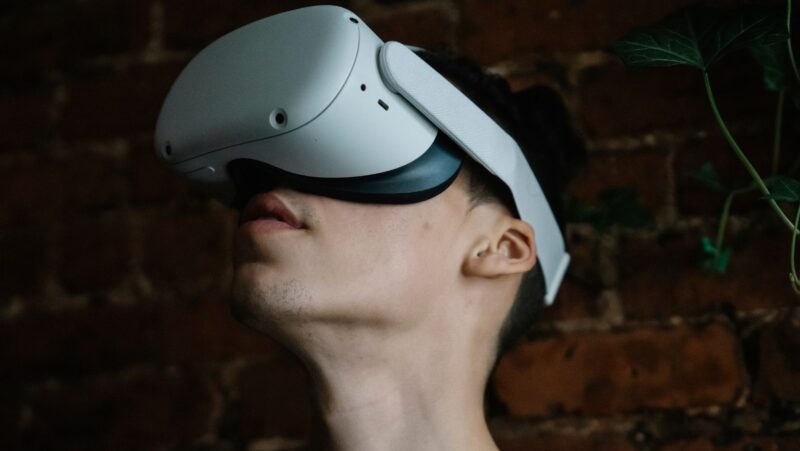High Tech Innovations
 In the rapidly evolving world of technology, high tech innovations are transforming our lives in ways we’d never imagined. From the way we work, communicate, and entertain ourselves, to how we manage our health and navigate the world around us, these advancements are redefining the boundaries of possibility.
In the rapidly evolving world of technology, high tech innovations are transforming our lives in ways we’d never imagined. From the way we work, communicate, and entertain ourselves, to how we manage our health and navigate the world around us, these advancements are redefining the boundaries of possibility.
Yet, as exciting as these developments are, they’re often shrouded in complex technical jargon that can be hard to decipher. That’s where this article comes in. It’s designed to demystify the latest high tech innovations, breaking them down into digestible insights that everyone can understand and appreciate. So, whether you’re a tech enthusiast or a curious novice, you’re in the right place. Let’s dive into the fascinating world of high tech innovations.
Evolution of High Tech Innovations
High tech innovations haven’t appeared out of thin air. A complex journey of transformation bridges the gap from vintage gadgets to the modern marvels witnessed today.
From Past to Present
Transitions in high tech innovations trace back to the advent of the computer era around the mid-twentieth century. Basic computers, with bare minimum functionalities, set the stage for a revolutionary turn in technologic capacities.
bare minimum functionalities, set the stage for a revolutionary turn in technologic capacities.
Extending from this, the 1980s marked considerable strides, such as the popularization of personal computers. Further down the line, the early 2000s delivered a wave of diverse innovations. Included in this era were digital platforms for social interaction, epitomized by Facebook created in 2004, and the game-changing smartphone revolution sparked by the launch of Apple’s iPhone in 2007. The Internet of Things (IoT) extended this tech journey later in the 2010s by integrating physical devices with cyber systems.
Advancements persist, continually refining and pushing the boundaries of what high tech innovations represent, rendering it an ever-evolving field.
Key Influencers and Moments
Pivotal moments and key influencers significantly mould the course of high tech innovation’s evolution. Among the titans of innovation,  some noteworthy names stand out.
some noteworthy names stand out.
Bill Gates and Microsoft, pivotal in personal computing, brought Windows OS to the world. Google, spearheaded by Larry Page and Sergey Brin, revolutionized information retrieval. Steve Jobs and Apple Inc., true game-changers, catalyzed the smartphone era. Elon Musk, through Tesla and SpaceX, is pushing the envelope of electric vehicle technology and space travel.
Certain events have primarily shaped high tech innovation trends. They encompass the unveiling of the World Wide Web in the early ’90s, Apple Inc.’s introduction of the first-generation iPod in 2001 and the iPhone in 2007, and Bitcoin’s initiation of the blockchain era in 2009.
High tech innovations’ evolution isn’t just a series of singular events. It’s an interconnected mesh of instances and influencers propelling progress relentlessly. The journey continues, jumping from the present into the unchartered realms of the future.
Major Advancements in High Tech Innovations
As continuation of the previous narrative, which established the trajectory of high tech evolution, this section explores advancements in three pivotal domains: Robotics and Automation, Artificial Intelligence (AI) and Machine Learning (ML), and Quantum Computing. Each subsection manifests the dynamic progress in high tech innovations, entrenched in our day-to-day activities and geared towards a future unforeseen.
Robotics and Automation
Robotics and automation comprise a transformative segment of high tech innovations. Real-life examples include Boston Dynamics’ humanoid robots and Amazon’s robotic warehouses. Boston Dynamics’ progressive design, Spot, demonstrates the ability of robots to interact in complex environments, perform necessary tasks, and exhibit mobility comparable to biological creatures. On the other hand, Amazon has integrated close to 200,000 robotic units in their warehouses, reducing human labor and significantly escalating efficiency.
Artificial Intelligence and Machine Learning
Pioneers in the realm of AI and ML consist of IBM’s Watson and Google’s DeepMind. IBM’s Watson demonstrated the potential of AI when it triumphed over human competitors in the television game show Jeopardy in 2011. Subsequently, Google’s DeepMind showcased AI’s proficiency in learning through their program AlphaGo, defeating world champions at the notoriously complex board game Go. These instances encapsulated the apex of AI and ML, rendering systems capable of learning from experience and making informed decisions akin to human intelligence.